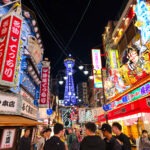Kyoto, what an incredible city! Among its narrow streets and lush nature, history comes alive, taking you back in time. With over 2000 temples, palaces, and gardens, every corner of Kyoto whispers secrets of the past. Remarkably, unlike many other Japanese cities, Kyoto emerged virtually unscathed from the horrors of World War II.
This fortunate preservation has kept its priceless architectural and cultural heritage intact to this day. Walking through its streets feels like stepping into a Japanese fairy tale that refuses to be forgotten. No wonder Kyoto’s entire historical ensemble has been a UNESCO World Heritage Site since 1994!

How many days do I need to visit Kyoto?
If you’re passionate about Japanese culture and tradition, Kyoto is the place for you. It’s a city brimming with beautiful sights. You could spend weeks here and still have more to discover. While you can fit a lot into a 3 or 4-day itinerary, to truly enjoy Kyoto, explore its less touristy corners, and take your time, it’s best to spend more time, even if it’s on different trips.
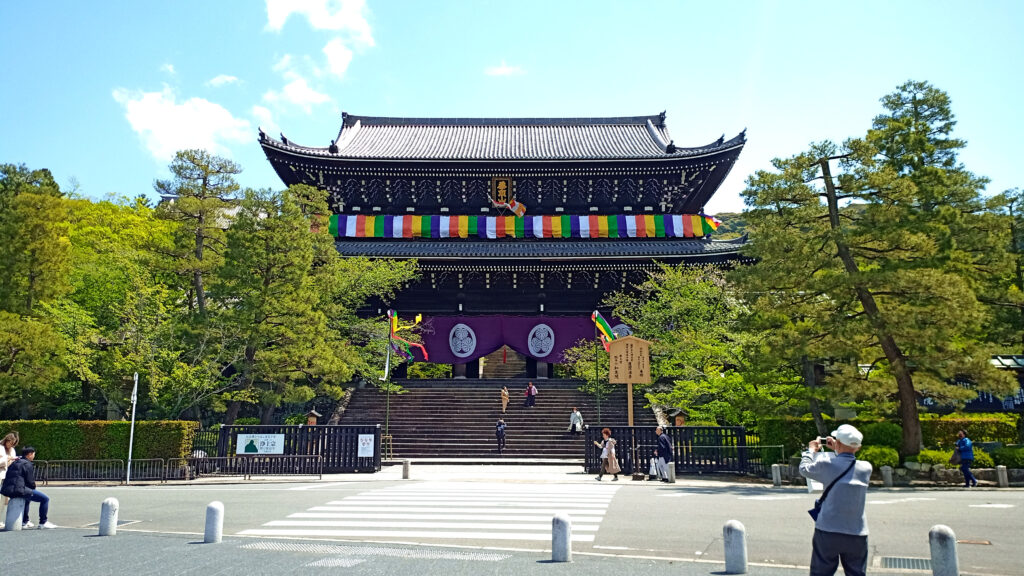
You’ll likely want to return again and again to keep uncovering this fascinating city. To help, we’ve compiled the most beautiful highlights from all our visits to Kyoto into a 7-day itinerary for you to choose. 😊

When is the best time to visit Kyoto?
If you’re looking for pleasant weather and plenty of daylight hours, October is ideal.
Our favourite time is definitely during momiji (usually late October to early December), when you can witness the Japanese gardens turning a vibrant red – it’s truly stunning!
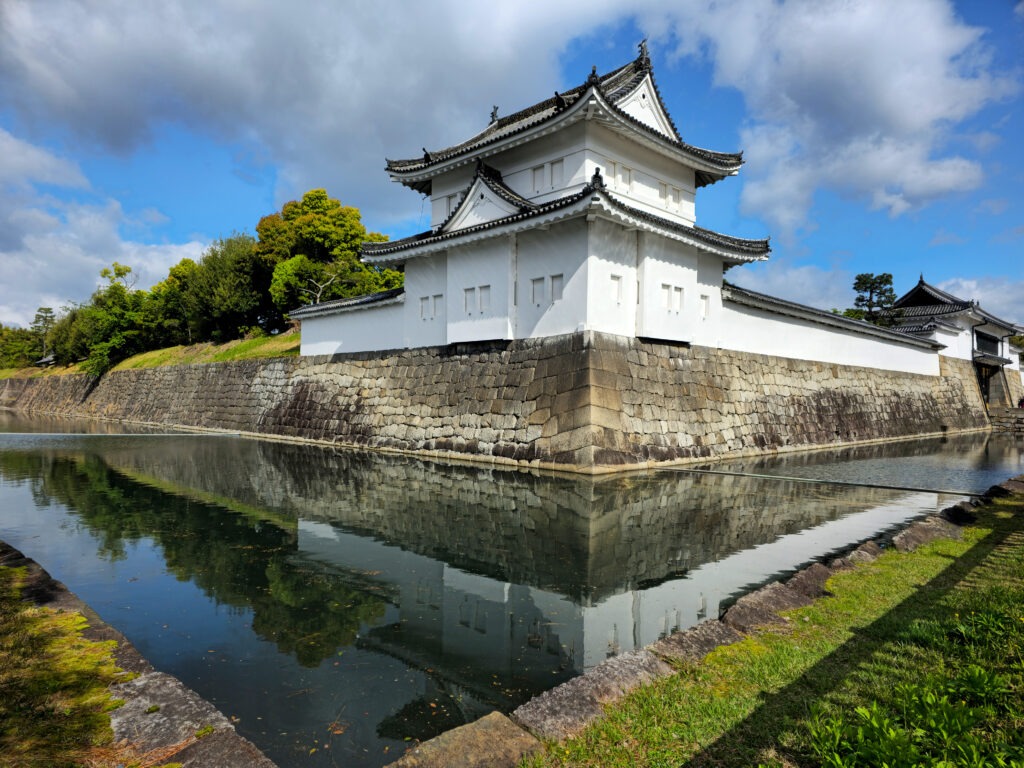
Spring is also an attractive option, as the gardens begin to bloom (especially if you time your visit with the sakura, or cherry blossom). However, you might encounter some rainy days.
Winter months can be quite cold and snowy, which has its own charm, but we personally prefer autumn for its comfortable temperatures and longer daylight hours.
We recommend avoiding the summer months due to the intense heat, high humidity, and rainfall (especially in September, when there’s a good chance of typhoons).
However, Japan is always a fascinating destination, so if summer is your only option, don’t hesitate!

What to see and do in Kyoto in 7 days
Day 1. Downtown Kyoto
The downtown area of Kyoto doesn’t have many points of interest, but it’s home to some of the most visited spots.
- Kyoto Station. Believe it or not, you could spend hours exploring Kyoto Station. It has many interesting places, like a model train shop on the ninth floor or Kyoto Ramen Street on the tenth floor. At the top, you’ll find a free observation deck.
- Kyoto Tower. Located right in front of the station, it’s beautiful during the day and even more impressive at night with its coloured lights. You can buy tickets to go up to the observation deck here.
- Nijo Castle. One of Kyoto’s most famous sights. This castle is fascinating not just as a traditional Japanese house, but also for offering insights into the life of the samurai and the military strategies used in the castle.
- Imperial Palace and its gardens. Another of Kyoto’s must-see locations. It has a JR train stop nearby, so it’s often visited on the same day as Arashiyama on the west side, especially if you have the JR pass, since both places are on the same train line.
- Nishiki Market. Stop for lunch at this market and stroll through the nearby shotengai to visit the Nishiki Tenmangu Shrine.
- Sanjo street. Here, you’ll find small traditional shops and can soak in the traditional architecture of the Meiji period.
- Higashi Hogan-ji and Nishi Hogan-ji temples. Located less than 10 minutes from Kyoto Station, they’re free and usually not very crowded (not a must if you’re short on time).
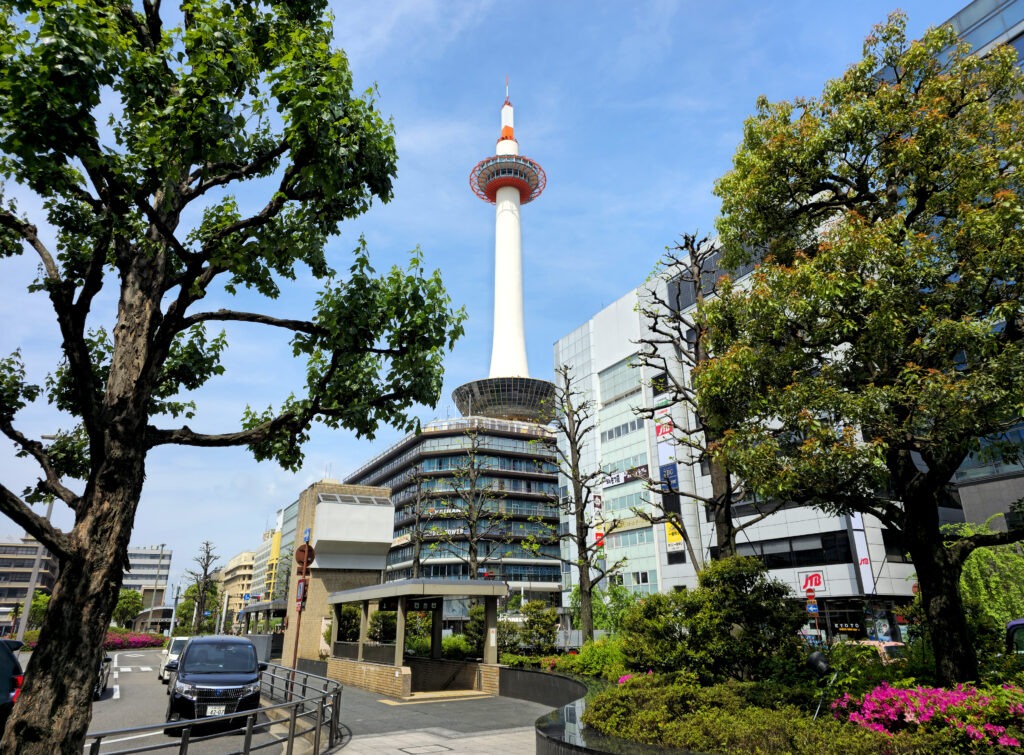
Day 2. East Kyoto
East Kyoto has so much to offer that you’ll need more than one day to explore it properly. You can tailor your itinerary to fit your interests.
If you’re visiting during the hanami season, start your day at Ginkakuji in the north and then head south along the Philosopher’s Path. Kiyomizudera is the temple that closes the latest, so you might still have time to visit it on the same day. If not, you can always save it for the next day.
If your visit doesn’t coincide with the hanami season, I recommend focusing on the area between Kiyomizudera and Heian Shrine. After visiting these spots, the temples will likely be closed, so take the opportunity to explore Pontocho and Gion, which are nearby.
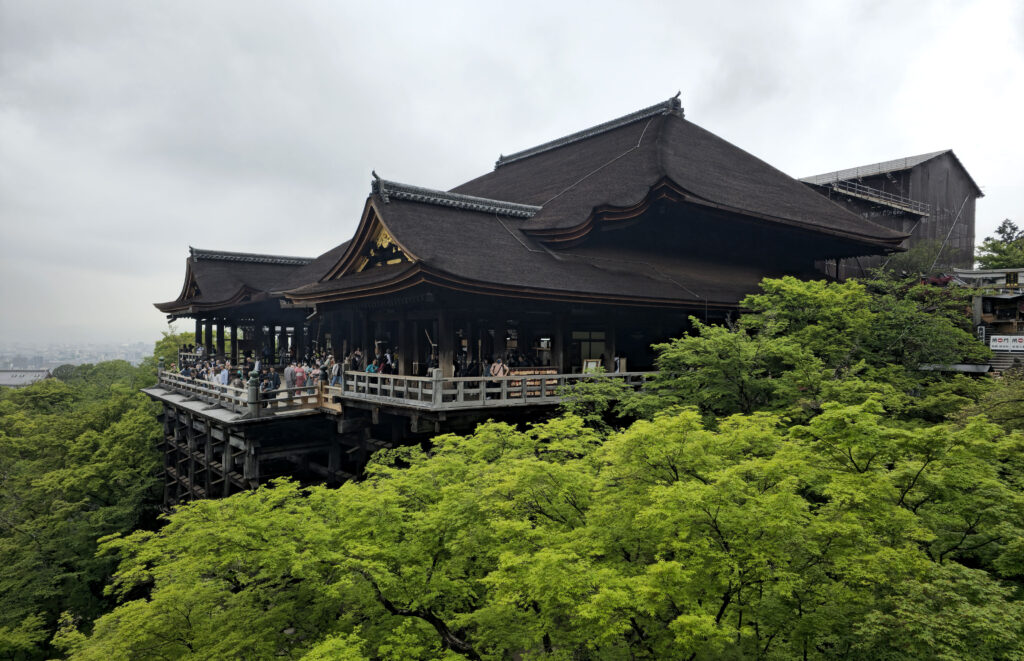
- Ninensaka and Sannensaka. These are two charming, sloping alleys near Kiyomizudera Temple in the Higashiyama district. They exude historical charm and are a must-see for every visitor. You can also find the Camellia FLOWER Teahouse here, where you can book a tea ceremony.
- Yasaka pagoda. Standing 46 meters high, this pagoda is situated in an old neighborhood between Kiyomizudera Temple and Yasaka Shrine. It’s the only remaining structure of the 6th-century Hokan-ji Temple complex.
- Templo Kiyomizudera. One of Japan’s most popular temples, located atop a small mountain and offering spectacular views of the city.
- Shijo and Kawaramachi streets. Two of Kyoto’s most popular shopping streets, perfect for buying souvenirs.
- Pontocho. One of Kyoto’s five geisha districts. This narrow pedestrian street runs parallel to the Kamo River and is lined with teahouses, traditional shops, and restaurants. It stretches from Shijo Street to Sanjo Street.
- Gion. Kyoto’s quintessential geisha district. Stroll through its streets with traditional Japanese houses, and if you’re lucky, you might spot a geisha or maiko (apprentice geisha).
- Gion corner. Here you can watch a show that introduces you to traditional Japanese arts. If your visit coincides with April, don’t miss the Miyako Odori performance.

Day 3. More of East Kyoto
- Santuario Yasaka. Located in the Gion district, it’s often referred to as the ‘Gion Shrine’ and is the most visited by geisha.
- Maruyama Park. Situated between Yasaka Shrine and Chion-in Temple, this park is particularly beautiful during the cherry blossom season.
- Chion-in temple. A Buddhist temple in the Higashiyama district, known for its impressive Sanmon Gate, the largest wooden gate in Japan.
- Heian shrine. Home to one of Kyoto’s most important festivals, the Jidai Matsuri, held every October. The imposing torii gate marking the entrance is one of the largest Shinto gateways in Japan.
- Ginkaku-ji. Also known as the Silver Pavilion (despite its lack of silver), it’s part of Kyoto’s World Heritage Site.
- Philosopher’s Path. This famous 2-kilometer walk begins at Ginkaku-ji Temple and is highly recommended, especially in spring.
- Sanjusangendo. Known for its 1001 statues of Kannon, the deity of mercy.
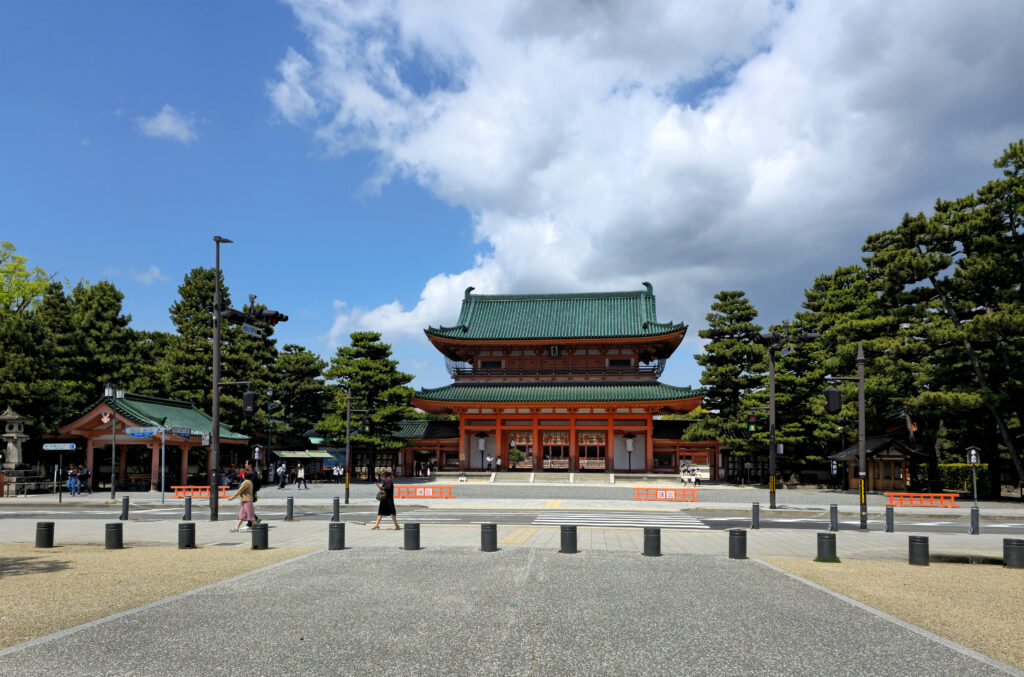
If you want to make the most of your visit and discover other less crowded but equally surprising places, we recommend checking out these spots:
- Kennin-ji temple. Located near Gion, this temple features beautiful gardens and impressive works of art.
- Nanzen-ji temple. One of our favorites!😄 This extensive Japanese Zen Buddhist complex is situated south of the Philosopher’s Path. Its gardens are worth a visit, unless you’re already feeling overwhelmed by all the gardens and temples. It’s quite large, so if you want to explore it thoroughly, it could take up to half a day.
- Eikan-do temple. Another top pick! Located at the end of the Philosopher’s Path, it’s especially stunning during the momiji (autumn leaves) or sakura (cherry blossom) seasons.
- Keage. This charming pedestrian path is a former railway line that gently slopes and is lined with beautiful cherry trees, connecting the Lake Biwa canal with Kyoto’s Kamo River.
- Honen-in temple. One of the five great Zen temples of Kyoto, it’s near Ginkakuji (the Silver Pavilion) and practically at the beginning of the Philosopher’s Path.
- Miyagawacho. Another of Kyoto’s five geisha districts, located close to Yasaka Shrine. It’s rich in history, culture, and beauty, and highly recommended.
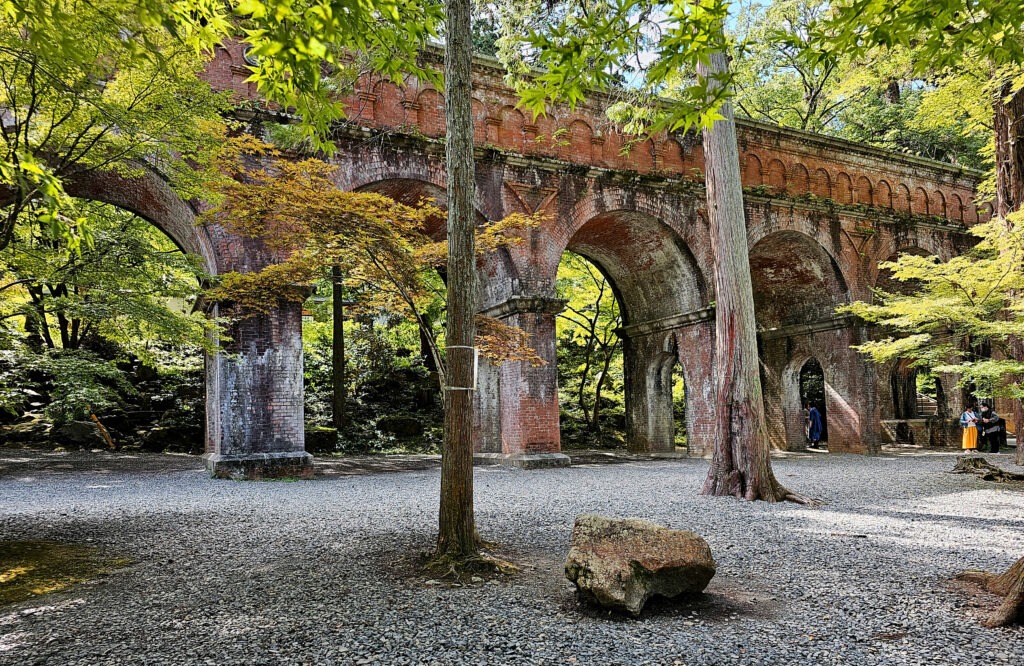
Day 4. South Kyoto
- Toji temple. Featuring Japan’s tallest wooden pagoda and beautiful gardens, this World Heritage Site is near Kyoto Station. A visit is particularly recommended on the 21st of each month when the Kobo-san market is held.
- Tofukuji temple. Ideal to visit in spring and especially in autumn for its beautiful red foliage.
Further south, there are two must-see places: Fushimi Inari Shrine, famous for its hundreds of orange torii gates, one of the most iconic images of Japan. It’s only 3 km from Kyoto Station and takes just 7 minutes by train. However, we recommend saving this for another day and combining it with a trip to Nara. For today, consider visiting the town of Uji, about 20 minutes by train from Kyoto:
- Byodo-in temple. This famous temple appears on 10 yen coins and is known for its stunning reflection in the lake.
- Ujigami shrine. The oldest Shinto shrine in Japan and a World Heritage Site.
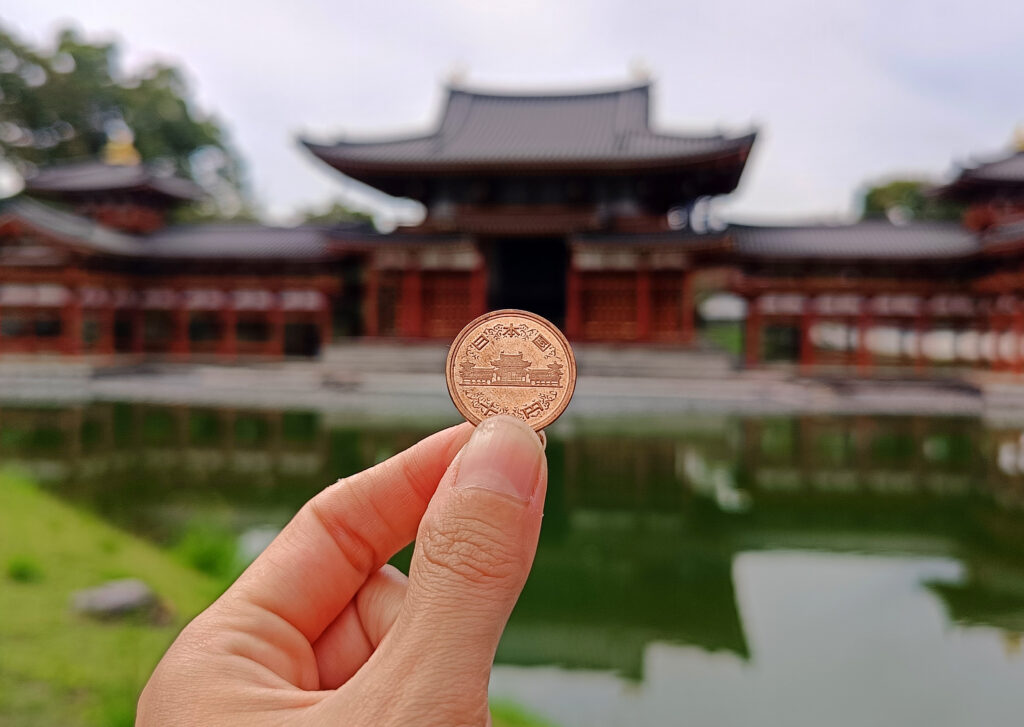
Just 100 meters south of Ujigami Shrine is Uji Shrine, also built in the nagare-zukuri style. These two shrines were originally part of the same complex until they were separated during the Meiji Period.
🚅 To get to Uji from Kyoto Station, you can take the express or local train on the JR Nara Line to Uji Station. The journey takes only 20-30 minutes, so you could also consider combining this visit with a trip to Nara if you prefer.
Day 5. West Kyoto
When we talk about the western part of Kyoto, we mainly mean the Arashiyama area. Here, you’ll find two essential places to visit in Kyoto: Tenryuji Temple and the Arashiyama Bamboo Forest.
- Bamboo forest. This beautiful and photogenic path between tall bamboo trees is one of the best places to take pictures in Kyoto.
- Tenryuji temple. Built in 1339, this temple is the main temple of the Rinzai school and features a spectacular 14th-century Zen garden, one of the best in Japan.
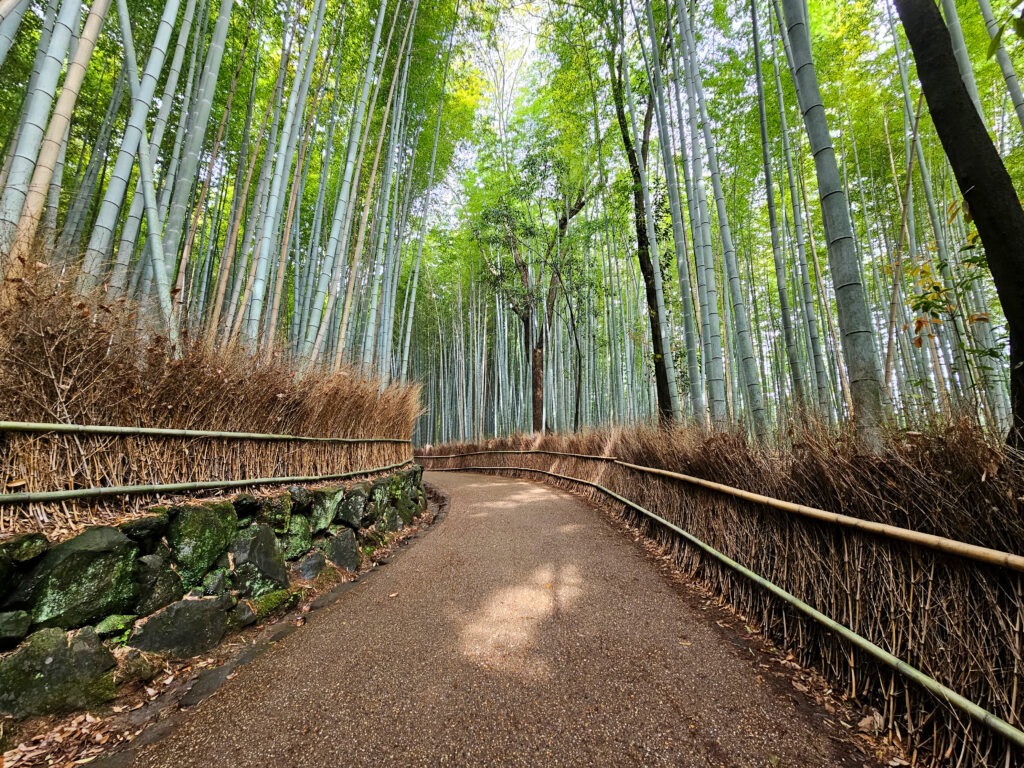
If you want to make the most of your visit to Arashiyama and see other less touristy but equally impressive places, we recommend:
- Otagi Nenbutsu-ji temple. Known for its amazing 1,200 rakan statues.
- Adashino Nenbutsu-ji temple. A nearby temple famous for its stone statues in memory of the deceased and a beautiful small bamboo forest.
- Gioji temple: A quiet temple surrounded by trees and a lush moss garden.
- Daikaku-ji temple. An ancient temple with a landscaped lake and beautiful gardens offering a peaceful haven.
- Jojakko-ji temple. Located on a mountainside, this temple offers panoramic views of Kyoto and beautiful gardens.
- Kimono Forest. A small ‘forest’ where kimonos are displayed like trees.
- Togetsukyo bridge. Also known as the ‘bridge that crosses the moon’, it’s a symbol of the area and a well-known setting for period films.
- Saga Toriimoto street. A charming historic preservation district with cobblestone streets and traditional Japanese houses.

🚅 To reach the Arashiyama area, you can take either a train or a bus. There are several train stations to choose from, including Arashiyama Station, Sagano-Arashiyama Station, and Torokko Arashiyama Station. If you have a JR Pass, it’s best to go to Sagano-Arashiyama Station, as it’s on the JR line and won’t cost extra.
If you don’t have a JR Pass, you can go to Arashiyama Station, which is slightly closer and right next to the charming ‘Kimono Forest.’ Alternatively, you can take the scenic route on the old Sagano Scenic Railway from Torokko Station.
Day 6. North Kyoto
- Templo Kinkakuji. Also known as the Golden Pavilion, this is one of Kyoto’s most famous temples, covered in pure gold. We recommend visiting at sunset when the sunlight illuminates the golden walls beautifully.
- Ninna-ji temple. A sprawling temple with several halls, a five-story pagoda, and gardens filled with cherry trees, making it a popular spot during sakura season. The grounds also feature the Reiho-kan Museum, which requires an additional entrance fee.
- Ryoanji temple. Famous for its flat Zen garden with 15 rocks, this temple is very close to Ninna-ji.
- Kamishichiken. The oldest of Kyoto’s five geisha quarters.
- Kitano Tenmangu shrine. Located near Kamishichiken Ward, this shrine is rarely visited due to its remote location. On the 25th of every month, there is a flea market where you can buy second-hand kimonos, antiques, and more.
- Shimogamo shrine. This is the oldest shrine in the country and a World Heritage Site.

If you have more time, consider visiting some less touristy places like:
- Myoshinji Temple Complex and Taizo-in Subtemple. The largest Zen monastery in Japan, with 46 subtemples in the main compound. The Taizo-in subtemple, located in the southwest of the complex, is particularly noteworthy.
For a trip to the outskirts:
- Amanohashidate. A pine-covered sandbank, renowned as one of Japan’s three most beautiful scenic views. This natural bridge links both sides of Miyazu Bay in northern Kyoto Prefecture and is part of a national park.
🚅 To get to Amanohashidate from Kyoto Station, take the Hashidate limited express train to Amanohashidate Station. The journey takes about 2 hours. Even with a JR Pass, you will need to pay a supplement of 1,380 yen for the non-JR portion of the journey. The sandbank is a 10-minute walk from the station.

Day 7. Fushimi Inari and Nara
Fushimi Inari Shrine is well connected to Kyoto. It’s a five-minute walk from Fushimi Inari Station on the private Keihan Line, and a three-minute walk from Inari Station on the JR Nara Line (included in the JR Pass).
If you have a JR Pass, use the JR Nara Line to get to Inari in less than 10 minutes. Be aware that the express trains do not stop at Inari, so take the local service.
Both the JR and Keihan lines also connect to Nara, so it’s a good idea to plan both excursions on the same day. Start early at Fushimi Inari to avoid the crowds, then head from Inari Station to Nara.

🚅 To get to Nara, you can use rapid services; it takes about 40 minutes from Kyoto and less than half an hour from Inari. Once in Nara, we recommend:
- Todaiji temple. Located in Nara Park, this temple is famous for its 15-meter high bronze Big Buddha and is a World Heritage Site.
- Kofukuji temple. Its five-story pagoda is the second tallest in Japan at 50 meters and is also recognised as a World Heritage Site.
- Kasuga Taisha shrine. Located on the slopes of Mount Mikasa, this shrine with thousands of lanterns is another World Heritage Site.
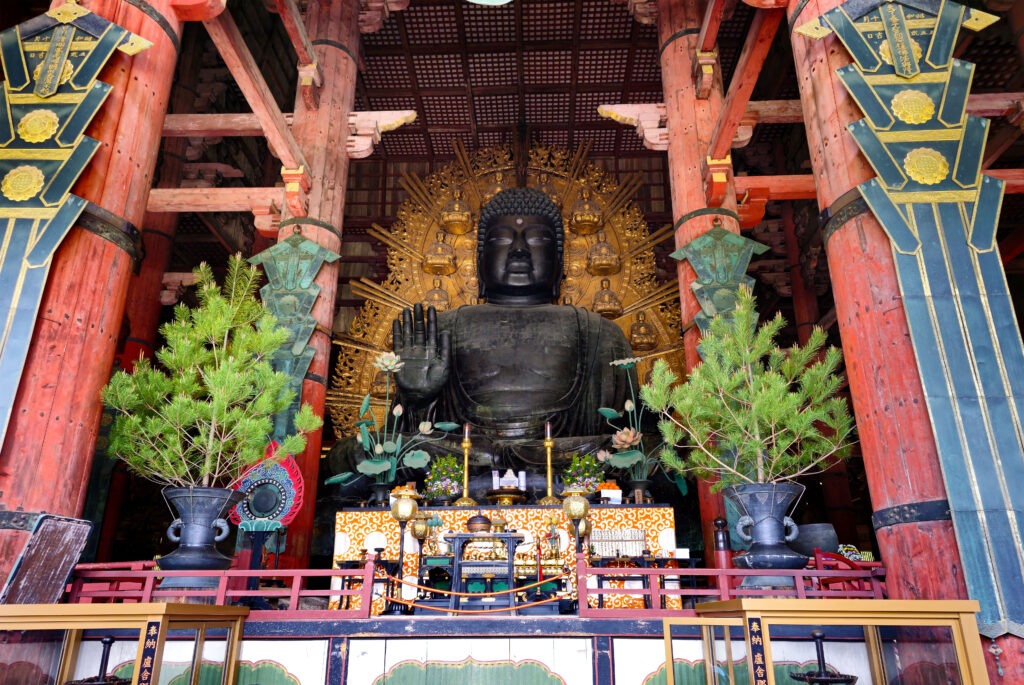
If you want to explore other less touristy but equally beautiful places in Nara, consider:
- Horyu-ji temple. Located on the outskirts of Nara, surrounded by pine trees, this temple is famous for its five-story wooden pagoda and is one of the oldest wooden buildings in the world. It’s designated a UNESCO World Heritage Site and a National Treasure by the Japanese government.
- Isui-en gardens. This beautiful garden is divided into two parts, showcasing the luxurious lifestyles of wealthy merchants during the Edo period (1603-1868) and the Meiji period (1868-1912).
- Heio palace. Once the Imperial Palace of Japan during most of the Nara period, Heijo Palace is now a registered World Heritage Site.
As you can see, Nara has so much to offer and is a must-visit destination. Don’t miss it!
And to end your day, don’t forget to buy some biscuits for the deer 😊. These deer, considered messengers of the deities in Shinto, aren’t dangerous, but if they think you have food, they won’t hesitate to try and get it from you. So be careful!
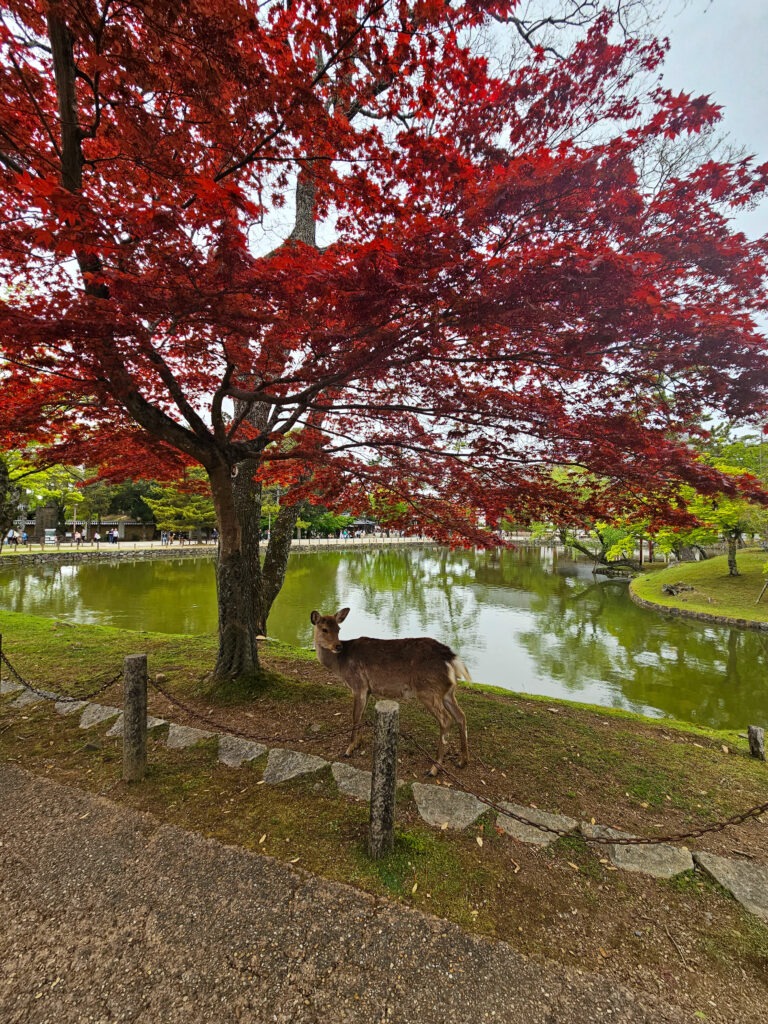
How to get around Kyoto
In Kyoto, you’ll primarily get around by bus and on foot. The metro network only has two lines, so buses are the most common way to travel between your accommodation and the main attractions. Kyoto has a well-organised bus system that covers all the tourist spots efficiently.
You can also rent a bicycle, as many hotels and ryokan offer this service for free.
There used to be a daily bus pass for 700 yen, but it was discontinued in 2023. Now, it’s best to get a Suica-type prepaid card for hassle-free bus travel.
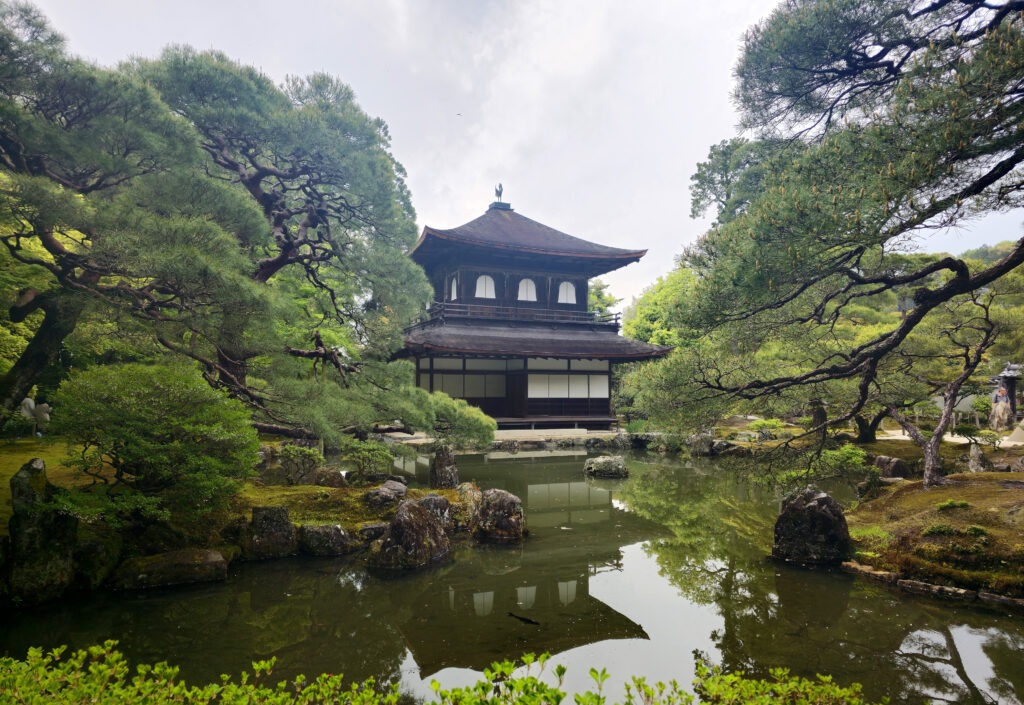
Remember, enter through the back door and exit through the front, where you pay either in cash or with a transport card like Suica or Pasmo. A single bus ticket costs 230 yen. There’s also a combined bus and subway pass for 1,100 yen per day, available at the tourist information office at the train station.
For destinations like Arashiyama, Uji, Nara, and Fushimi Inari, you can use the JR line, which allows you to utilise your JR Pass. However, the JR Pass is generally less useful in Kyoto compared to Tokyo.
There are some JR buses, though their frequency and coverage are limited. They can still be handy for getting around northwest Kyoto.
Tips for visiting Kyoto
- Take it easy. Kyoto has many sights, so don’t feel pressured to see them all in one trip. Prioritise your favorites and enjoy the city at a leisurely pace.
- Explore aimlessly. Spend time wandering Kyoto’s streets without a set itinerary. Discover hidden temples, traditional shops, and charming corners not usually in guidebooks.
- Immerse yourself in the local culture. Participate in cultural activities like a tea ceremony, a Japanese cooking class, or a traditional onsen experience. This helps you understand Kyoto’s culture and traditions better.
- Get up early. Arrive at popular sites as early as possible to avoid the crowds.
- Wear comfortable shoes. Kyoto is best explored on foot. We usually took a bus early in the morning and another one back. The rest of the time, we walked.
- Wear thick socks. Many temples require you to take off your shoes. If you’re traveling in winter, pack thick socks to keep your feet warm. Shoes are left in lockers, but don’t worry, no one will steal them.
- Buy a goshuincho. If you want a precious souvenir of Japan, collect goshuincho (temple stamps). If you want to know more about this tradition, check out our post.
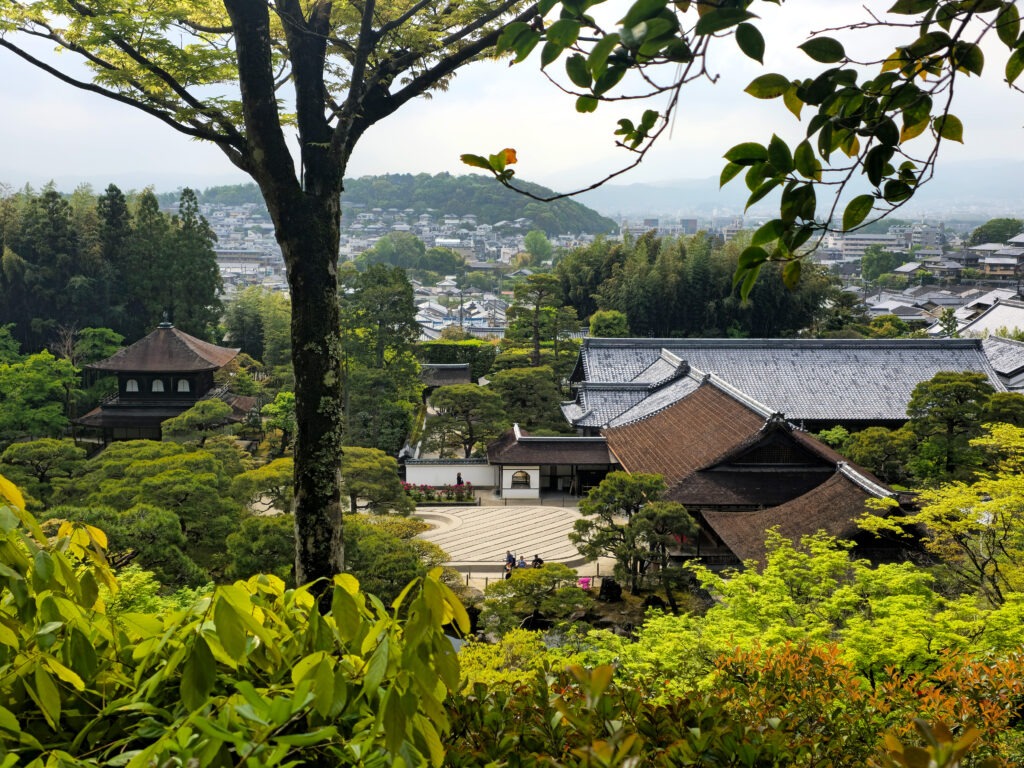
Where to sleep in Kioto
Consider staying in a machiya, a traditional Japanese house, especially if you’re traveling with your family.
🏠 Machiya:
If you prefer staying near Kyoto Station, this hotel is only a 3-minute walk away:
🏩 Near Kyoto Station:
Our preferred option is to stay in the Gion district. Hotel ZIZI Kyoto Gion offers spacious rooms with balconies at very affordable prices:
🏨 Near Gion:
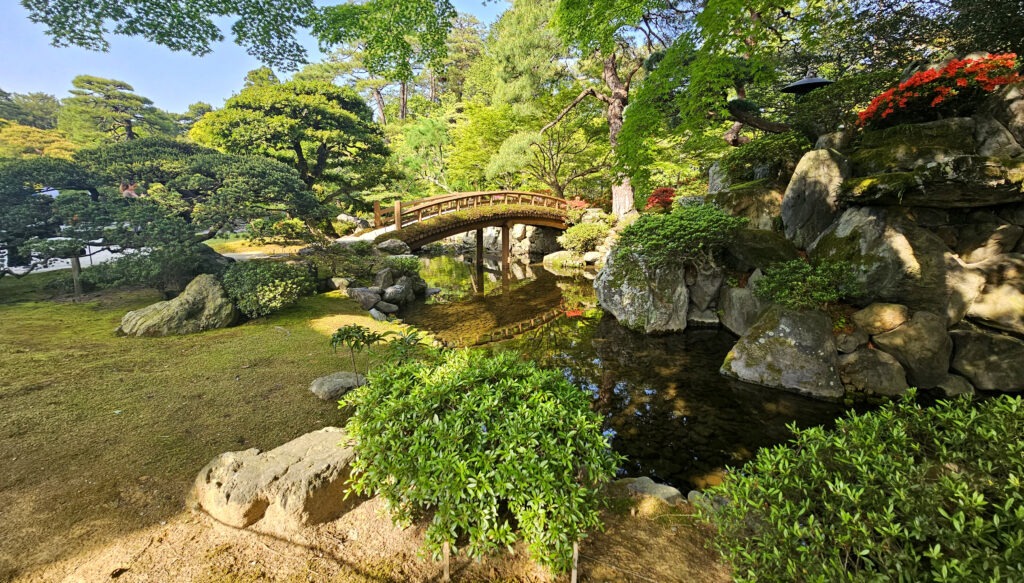
To wrap up this guide, if you’re in Japan for an extended stay, also read our recommendations for what to see in Tokyo in a week and 7 days in Osaka.

